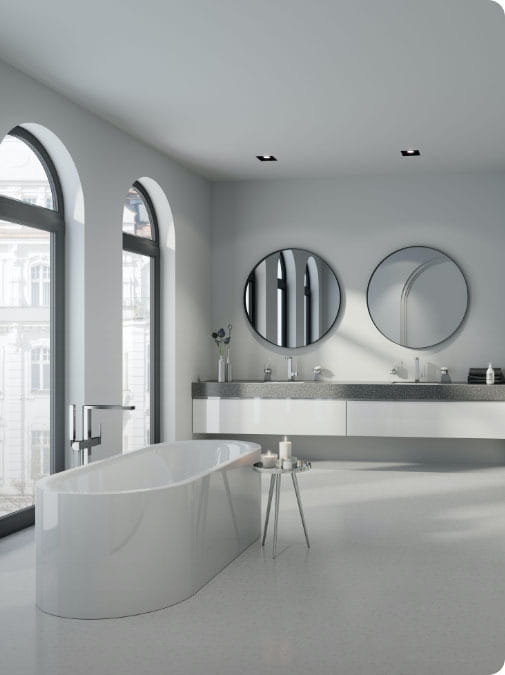ReVision House in Las Vegas - American Standard Teams Up To Overhaul Home That Produces More Energy Than It Consumes
oct. 12, 2021
A 1960s Las Vegas ranch home received an energy-efficiency overhaul in order to demonstrate how a typical energy hog can be transformed into an energy saver using many renewable and sustainable technologies. Amidst the housing crisis and foreclosures, a silver lining may be the upgrading of existing homes with green technologies such as those showcased in the ReVISION House Vegas, the fourth in Green Builder's Vision demonstration home series and the first retrofit project.
During the spring of 2010, American Standard and other corporate sponsors teamed with the U.S. Department of Energy, Building Media, Inc. and Green Builder® Media, LLC to remodel a 1,800-square-foot ranch into a cost-neutral, net-zero energy home. Said differently, this house actually produces more energy than it consumes.
The goal of the project was to demonstrate cutting edge technologies and sustainable green building practices for builders and remodelers attending the 2010 International Builders Show. The ReVISION House Vegas home is a deep retrofit of a 1963 ranch house that cut energy bills by more than 60 percent and turned this half-century-old energy drain into a textbook example of sustainable design.
Sponsorship of the ReVISION House Vegas is the latest in a series of initiatives by American Standard Brands to raise awareness of practical water conservation solutions through award-winning product innovations and increased consumer choice. In February, American Standard Brands announced a $1 million, two-year partnership with The Nature Conservancy, the world’s largest conservation organization, in support of its mission in the area of global freshwater conservation.
In addition to its financial support, American Standard donated water efficient faucets, showerheads and high performance toilets for the home, including its Moments™ bathroom faucet, Culinaire® stainless steel kitchen sink and Pekoe® kitchen faucet. The faucets and FloWise® showerheads are WaterSense®-certified for water efficiency and meet the most stringent lead-free requirements. The American Standard H2Option™ dual-flush toilet chosen for the house has two modes of operation: one uses less than a gallon per minute for flushing liquids, and the other uses 1.28 gallons per minute for flushing solids.
During the spring of 2010, American Standard and other corporate sponsors teamed with the U.S. Department of Energy, Building Media, Inc. and Green Builder® Media, LLC to remodel a 1,800-square-foot ranch into a cost-neutral, net-zero energy home. Said differently, this house actually produces more energy than it consumes.
The goal of the project was to demonstrate cutting edge technologies and sustainable green building practices for builders and remodelers attending the 2010 International Builders Show. The ReVISION House Vegas home is a deep retrofit of a 1963 ranch house that cut energy bills by more than 60 percent and turned this half-century-old energy drain into a textbook example of sustainable design.
Sponsorship of the ReVISION House Vegas is the latest in a series of initiatives by American Standard Brands to raise awareness of practical water conservation solutions through award-winning product innovations and increased consumer choice. In February, American Standard Brands announced a $1 million, two-year partnership with The Nature Conservancy, the world’s largest conservation organization, in support of its mission in the area of global freshwater conservation.
In addition to its financial support, American Standard donated water efficient faucets, showerheads and high performance toilets for the home, including its Moments™ bathroom faucet, Culinaire® stainless steel kitchen sink and Pekoe® kitchen faucet. The faucets and FloWise® showerheads are WaterSense®-certified for water efficiency and meet the most stringent lead-free requirements. The American Standard H2Option™ dual-flush toilet chosen for the house has two modes of operation: one uses less than a gallon per minute for flushing liquids, and the other uses 1.28 gallons per minute for flushing solids.


